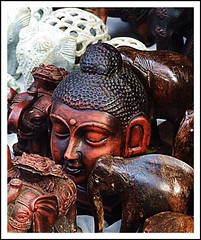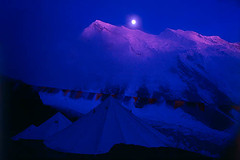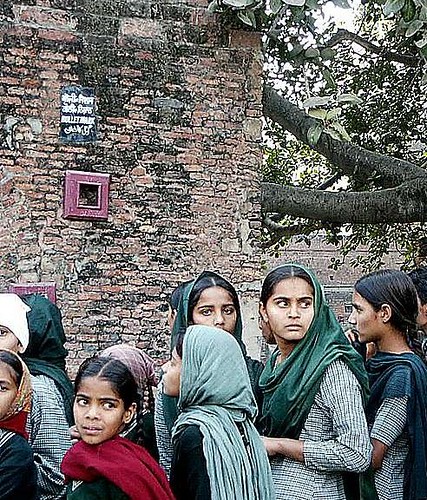School children are going around Jallianwala National Monument.
Jallianwala Bagh the National Memorial had become a place of pilgrimage for Indians even before the Independence .Situated just few hundred meters from sacred Harmandir Sahib (Golden Temple), this memorial is reminder of massacre of hundreds of unarmed, defenseless Indians by a senior British military officer Brigadier -General Dyer on 13 April 1919 in the heart of Amritsar, the holiest city of the Sikhs, on a day sacred to them as the birth anniversary of the Khalsa.
Recapitulating briefly the history of this unfortunate incident during British Raj, Brigadier-General Dyer incharge of Amritsar had, issued a proclamation prohibiting meetings and processions in the town. Jallianwala Bagh was an open enclosure with tall buildings on all the four sides with a narrow passage which led into it. It is said that about 25000 men, women and children had gathered to participate in a protest meeting against Rowlatt Act. They included Hindus, Muslims, Sikhs and Christians. General Dyer appeared on the scene with his armed troops and without any warning ordered firing, aimed at dispersing the crowd though he had blocked the only exit of enclosure. With escape route unavailable, there was a general stampede. Old men, women and children got crushed under those who trying to escape firing. To escape bullets many jumped to death in an open well now known as Martyr’s well.120dead bodies were later recovered from this well.General. Dyer left the ghastly scene along with his troops after they had exhausted their ammunition. Far from attending to the wounded, there was none to offer even water to the dying. According to the official version, 379 people were killed on the spot and thrice as many wounded to die later. The unofficial number of the dead runs into four figures.
Subscribe to:
Post Comments (Atom)














0 comments:
Post a Comment